Another bumper year for Mena projects
25 December 2024

The Middle East’s projects market in 2024 has been fuelled by the same heady cocktail of favourable oil prices, continued investment into oil and gas projects, government infrastructure spending, the energy transition, real estate investment and economic diversification that propelled the total value of awards in 2023 to record levels.
By the end of October 2024, there were $262bn of contract awards across the Middle East and North Africa (Mena) region, according to regional projects tracker MEED Projects. By the end of the year, the 2024 total may top the $290bn recorded in 2023.
While economic diversification is a priority for governments across the region, oil and gas remains a key sector for project awards. The three largest contract awards in 2024 were from the sector.
The top-ranked contract by value was a $20bn deal awarded to Iranian companies Petropars, Oil Industries Engineering & Construction, Khatam Al-Anbiya Construction Headquarters and Mapna Group for the South Pars gas field pressure-boosting project in Iran by Pars Oil & Gas Company.
Next was the $8bn deal won by China’s Hualu Engineering Technology Company for delivering the Al-Faw refinery in Iraq for Southern Refineries Company.
The third-largest award was a $5.5bn contract won by a joint venture of France’s Technip Energies, Japan’s JGC Corporation and the UAE’s NMDC Group for the Ruwais low-carbon liquefied natural gas terminal project by Abu Dhabi National Oil Company (Adnoc).
These contract awards mean that the oil and gas sector accounted for 32% of the $262bn total that was recorded in the Mena region by the end of October 2024.
Breaking down the sector into oil and gas separately reveals a telling trend. Oil accounts for 12% of awards, while gas accounts for 20%. These numbers reflect the growing importance of gas as a transition fuel that is cleaner and more environmentally friendly than oil, but still provides the dependable energy that many renewable alternatives still do not offer.
 Strong performances
Strong performances
Construction is the second-largest sector after oil and gas, accounting for 23% of awards. Its significance has dropped in 2024 compared to 2023, when it accounted for 32% of contract awards.
In terms of value, there were $68bn of contract awards in 2024 until the end of October. If the same pace is maintained during November and December, the 2024 total is expected to be about $81bn, which falls short of the 2023 total of $97bn.
While the total value of contract awards may have dropped, there was the largest construction contract award on record in 2024 – a $4.7bn deal secured by Italian contractor WeBuild for the construction of three dams for the Trojena mountain resort at Saudi Arabia’s Neom gigaproject.
The power sector accounted for 18% of the total awards during the period, the largest of which was the $5.3bn contract won by Saudi Arabia’s Alfanar Projects and China Electric Power Equipment & Technology Company for the 7,000MW Saudi Central, Western and Southern Regions high-voltage direct current overhead transmission lines project being developed by Saudi Electricity Company.
When analysed by country, Saudi Arabia and the UAE dominate the market, and together they account for over 60% of contract awards across the region in 2024 up to the end of October.
As the region’s largest economy, it is unsurprising that Saudi Arabia accounts for the largest share, with 38.6%, followed by the UAE, which had 22%. The next most significant country was Iran, which came in a distant third with 8% of contract awards.
The outsized contribution of Saudi Arabia and the UAE reflects the relative economic stability found in the GCC compared to other countries in the region that are grappling with the impact of conflict and other associated financial pressures.
Looking beyond the contract awards numbers, the biggest project announcement in 2024 came in April, when Abu Dhabi investment vehicle ADQ released details of plans to invest $35bn in Egypt. The plans involve ADQ acquiring the development rights for Ras El-Hekma, a planned new city on Egypt’s northern Mediterranean coast, for $24bn.
The development has been billed as having the potential to attract over $150bn in investment.
In October, ADQ appointed its subsidiary Modon Holding as the master developer for Ras El-Hekma. Modon will act as the master developer for the entire development, which covers more than 170 square kilometres (sq km).
Modon will develop the first phase, which covers 50 sq km, and the remaining 120 sq km will delivered with private developers.
Key partners for delivering the project have already been found. For construction, Modon has signed a framework agreement with Egyptian firm Orascom Construction to serve as the primary contractor for the project’s first phase.
Modon also signed a deal with Abu Dhabi National Energy Company (Taqa) for developing, financing and operating greenfield utility infrastructure projects, water desalination projects, electricity transmission and distribution projects and wastewater projects at the Ras El-Hekma development.
While economic diversification is a priority for governments across the region, oil and gas remains a key sector for project awards
Future prospects
Looking ahead, the performance of the projects market in 2025 will depend on the favourable macroeconomic conditions remaining in the GCC, which if the other four members of the six-nation bloc are added, accounted for nearly 72% of the Mena region’s total contract awards during the first 10 months of 2024.
The key metric to watch in 2025 will be the oil price. In mid-November, the price of Brent Crude was $72 a barrel, which is below what many in the region, including Saudi Arabia, require if they are to maintain their project spending plans.
The outlook for oil prices is uncertain and after oil producers’ group Opec cut its global demand growth forecasts for both 2024 and 2025 for the fourth time, highlighting economic weakness in China, India and other regions, there are concerns prices will dip in 2025.
The election of Donald Trump as US president adds to those concerns. He has promised to “drill, baby, drill”, and a sharp uptick in output from the US could cause oil prices to soften further.
Trump is also a protectionist and has said ‘tariff’ is his favourite word. Most of his new tariffs are expected to be aimed at China, which could mean that Chinese companies look to other markets that remain open to them, including the Middle East.
The appeal is clear to see. Chinese contractors already command a dominant position in the region – particularly in North Africa and Iraq – and Chinese companies will find great appeal in affluent markets such as Saudi Arabia and the UAE, which can offer large-scale project opportunities.
The other metric that will drive the projects market in 2025 is real estate. In the UAE, much of the ongoing development work is supported by the buoyant property market, particularly in Dubai, which has grown strongly throughout 2024.
According to a report by data and analytics company Reidin, property sales in the UAE reached AED46.52bn ($12.7bn) in October 2024, marking a 55% year-on-year increase. Demand also remains robust, with 19,500 transactions recorded in October, reflecting a 72% rise compared to the same period in 2023.
Looking ahead to 2025, Reidin says that the outlook remains optimistic as sustained demand, rising property values and steady inventory turnover are all expected to continue driving growth.
While the forecast supports a positive outlook for construction in the UAE, those who have seen Dubai’s property market collapse before will be keenly watching the data in 2025.
Exclusive from Meed
-
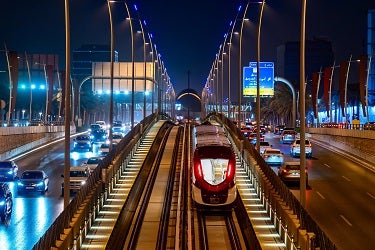
-
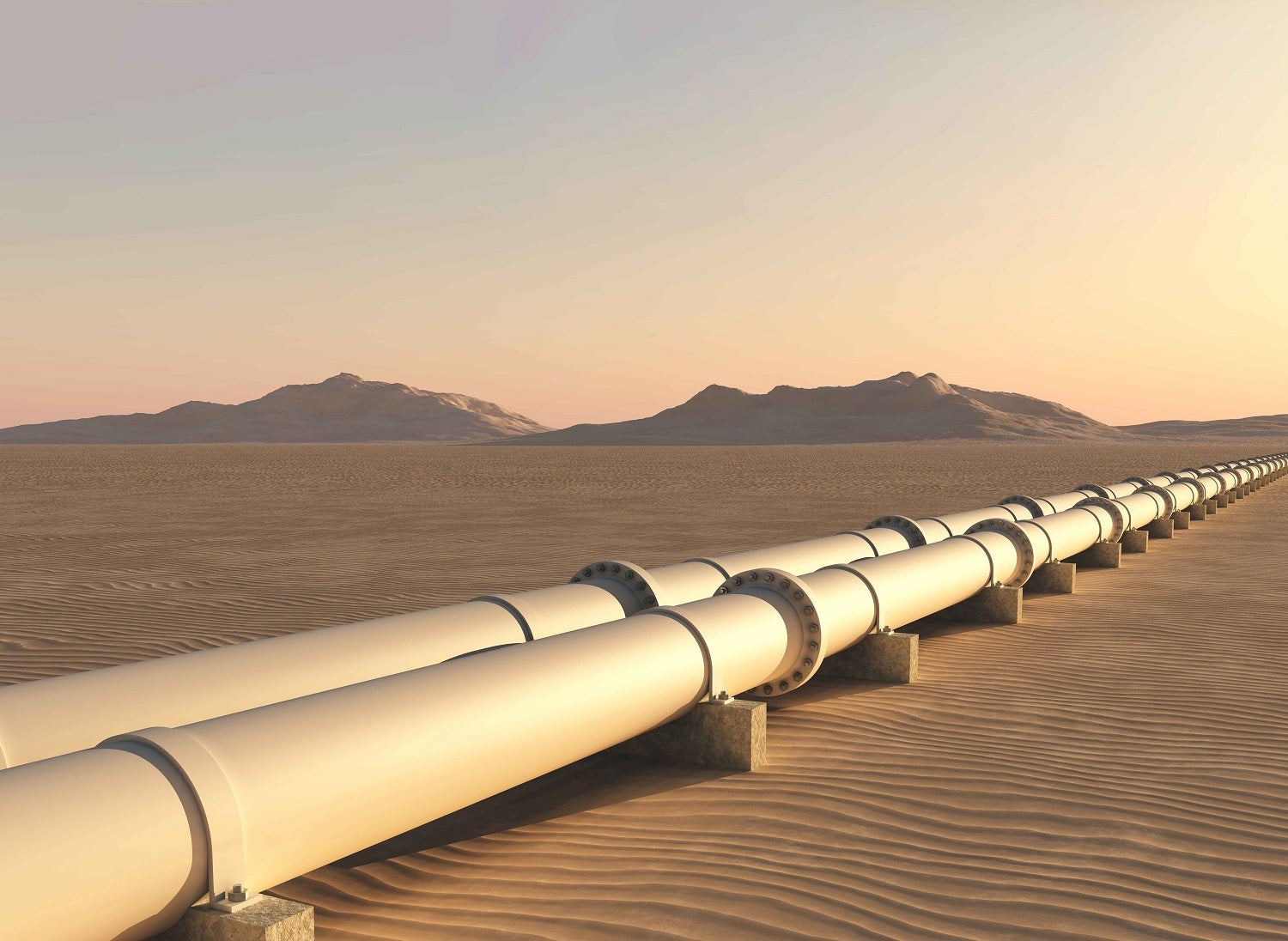
-
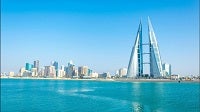 Bahrain and US sign nuclear energy agreement
Bahrain and US sign nuclear energy agreement17 July 2025
-
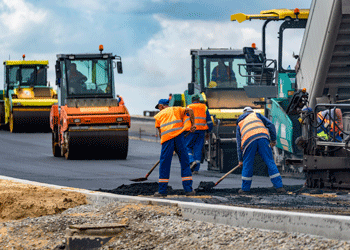 Kuwaiti firm wins $53m Duqm coastal road contract
Kuwaiti firm wins $53m Duqm coastal road contract17 July 2025
-
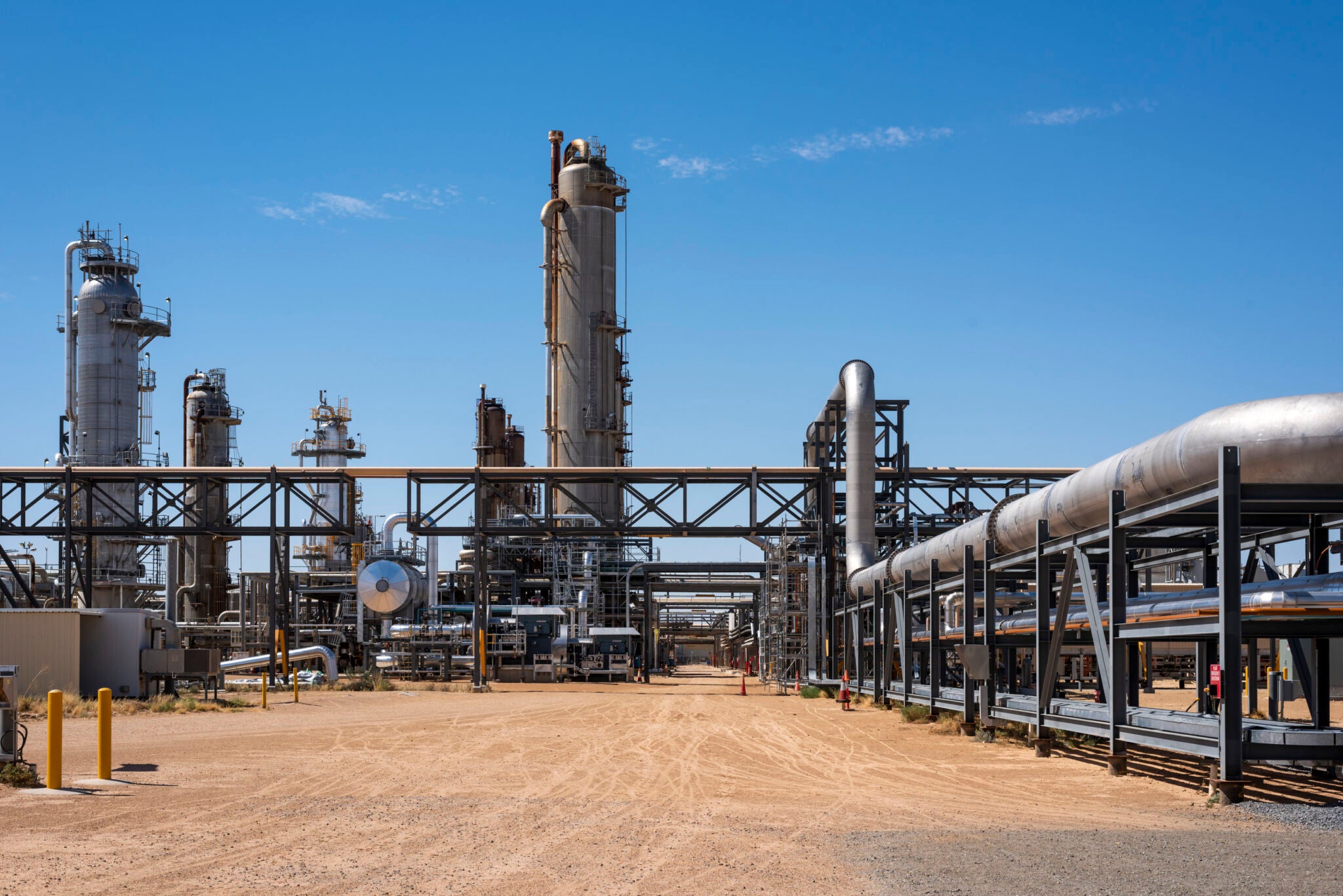
All of this is only 1% of what MEED.com has to offer
Subscribe now and unlock all the 153,671 articles on MEED.com
- All the latest news, data, and market intelligence across MENA at your fingerprints
- First-hand updates and inside information on projects, clients and competitors that matter to you
- 20 years' archive of information, data, and news for you to access at your convenience
- Strategize to succeed and minimise risks with timely analysis of current and future market trends

Related Articles
-
 Riyadh Royal Commission awards metro Line 2 extension
Riyadh Royal Commission awards metro Line 2 extension18 July 2025

Register for MEED’s 14-day trial access
Saudi Arabia’s Royal Commission for Riyadh City (RCRC) has awarded an estimated $800m-$900m contract to build the next phase of the Riyadh Metro project, which is the Line 2 extension.
The contract was awarded to the Arriyadh New Mobility Consortium.
The Line 2 extension is 8.4 kilometres (km) long, of which 1.3km is elevated and 7.1km is underground. It includes five stations – two elevated and three underground.
It will run from where Line 2 currently ends at King Saud University (KSU) and then travel onwards to new stations at KSU Medical City, KSU West, Diriyah East, Diriyah Central, where it interchanges with the planned Line 7, and then finally to Diriyah South.
According to the consortium’s official website, the consortium members include Italy’s Webuild, India’s Larsen & Toubro, locally based Nesma & Partners, Japan’s Hitachi, Italy’s Ansaldo STS, the Canadian firm Bombardier, Spain’s Idom and WorleyParsons from Australia.
In 2013, the Arriyadh New Mobility Consortium secured Riyadh Metro’s Line 3 project for $5.21bn.
Line 3, also known as the Orange Line, stretches from east to west, from Jeddah Road to the Second Eastern Ring Road, covering a total distance of 41km.
Riyadh Metro
Riyadh Metro’s first phase features six lines with 84 stations.
The RCRC completed the phased rollout of the Riyadh Metro network when it started operating the Orange Line on 5 January.
In December last year, the RCRC started operating the Red Line and Green Line.
The Red Line, also known as Line 2, stretches 25.1km from the east of Riyadh to the west, via King Abdullah Road, connecting King Fahd Sports City and King Saud University. It has a total of 15 stations.
The Green Line, also known as Line 5, extends 13.3km from King Abdullah Road to the National Museum. With 12 stations, it serves several ministries and government agencies, including the Defence Ministry, the Finance Ministry and the Commerce Ministry, as well as other areas.
Earlier in December, the RCRC started operating the Blue Line (Line 1), Yellow Line (Line 4) and Purple Line (Line 6).
The Blue Line connects Olaya Street to Batha; the Yellow Line runs along King Khalid International Airport Road; while the Purple Line connects Abdul Rahman Bin Awf Road with Al-Sheikh Hassan Bin Hussain Road.
King Salman Bin Abdulaziz Al-Saud inaugurated the Riyadh Metro on 27 November last year.
The network spans 176km. Four of the stations have been designed by signature architects.
The metro is part of the Riyadh Public Transport Project, which encompasses metro and bus systems. The project aims to relieve traffic congestion.
The $23bn project was scheduled to open in 2018, but construction activity slowed due to disputes over prolongation and the disruption caused by the Covid-19 pandemic.
The RCRC awarded the main construction packages for the scheme on 28 July 2013.
In November 2022, the RCRC struck a deal with three contracting consortiums working on the Riyadh Metro scheme regarding the completion of the project’s remaining works.
The Fast consortium won lines 4, 5 and 6, reportedly valued at $7.82bn. The Bacs consortium was awarded lines 1 and 2 for $9.45bn, while Arriyadh New Mobility secured Line 3 for $5.21bn.
US firm Bechtel leads the Bacs consortium. Italian firm Ansaldo STS is the leader of the Arriyadh New Mobility group, and Spanish firm FCC Construccion heads the Fast consortium.
AtkinsRealis has delivered programme management and supervision services for the operations and maintenance of the Riyadh Metro scheme.
https://image.digitalinsightresearch.in/uploads/NewsArticle/14289337/main.jpg -
 Firms submit bids for Maaden gold project water pipeline
Firms submit bids for Maaden gold project water pipeline17 July 2025

Saudi Arabian Mining Company (Maaden) has received proposals from local firms for a water pipeline network it plans to build as part of a larger project to develop a new gold mining and processing facility in the Al-Rjum region of the kingdom.
The Al-Rjum gold mining and processing facility, located in Medina province, is expected to be commissioned by the end of 2027. It will become the largest gold mining operation in Saudi Arabia when operational.
According to sources, the pipeline is to be developed using a build-own-operate-transfer (BOOT) model. The engineering, procurement and construction (EPC) works will have a duration of 38 months, followed by a 20-year operations and maintenance period.
Lamar Holding and Alkhorayef are understood to be the only bidders for the proposed Taif to Al-Rjum water pipeline, which forms package B of the Maaden gold mining project.
The two contractors submitted bids for the water pipeline project on 1 July, sources told MEED.
The main scope of work involves building a 150-kilometre pipeline that will supply treated sewage effluent water to the Al-Rjum gold mining facility.
ALSO READ: Saudi Arabia issues mining exploration licences
The Al-Rjum gold mining and processing facility will have an output capacity of 250,000 ounces of gold a year. The project will increase Maaden’s total gold production to 700,000 ounces a year by 2028, helping the company support Saudi Arabia’s overall goal of doubling gold production by 2030 and achieving a four-fold increase in output by 2040.
MEED recently reported that Maaden had received bids for a tender to develop accommodation facilities for over 4,500 of its workers at the upcoming Al-Rjum gold mining and processing facility.
Bids for the Al-Rjum worker accommodation tender, which is also under the BOOT model, were submitted in late June. The operations and maintenance period for this contract is 15 years.
ALSO READ: Saudi Arabia and Oman open up their minerals potential
https://image.digitalinsightresearch.in/uploads/NewsArticle/14284263/main3503.jpg -
 Bahrain and US sign nuclear energy agreement
Bahrain and US sign nuclear energy agreement17 July 2025
Bahrain and the US have signed a cooperation agreement covering the field of peaceful nuclear energy.
The agreement aims to enhance collaboration in nuclear energy, recognising its vital role in sustainable development and energy security. It aligns with Bahrain's ambitious goal of achieving carbon neutrality by 2060 and contributes to global efforts to combat climate change.
As Bahrain explores alternative energy sources, senior officials have previously indicated to MEED that they are closely monitoring developments in small modular reactor (SMR) technology. This is particularly crucial for Bahrain, where limited land availability poses challenges for solar energy projects. Floating solar plants have been identified as a potential solution, but the exploration of nuclear energy and SMRs remains a priority for future energy diversification.
The agreement was signed during an official visit to the US by Prince Salman Bin Hamad Al-Khalifa, the crown prince and prime minister of Bahrain.
The agreement was formalised by Abdullatif Bin Rashid Al-Zayani, Bahrain’s minister of foreign affairs, and Marco Rubio, the US secretary of state.
Al-Zayani added that the agreement builds upon the Comprehensive Security Integration and Prosperity Agreement (C-SIPA) signed in 2023. The agreement aims to strengthen cooperation in defence, security, emerging technologies, trade and investment.
 READ THE JULY 2025 MEED BUSINESS REVIEW – click here to view PDF
READ THE JULY 2025 MEED BUSINESS REVIEW – click here to view PDFUAE and Turkiye expand business links; Renewed hope lies on the horizon for trouble-beset Levant region; Gulf real estate momentum continues even as concerns emerge
Distributed to senior decision-makers in the region and around the world, the July 2025 edition of MEED Business Review includes:
> AGENDA: UAE-Turkiye trade gains momentum> INTERVIEW 1: Building on UAE-Turkiye trade> INTERVIEW 2: Turkiye's Kalyon goes global> INTERVIEW 3: Strengthening UAE-Turkiye financial links> INTERVIEW 4: Turkish Airlines plans further growth> CURRENT AFFAIRS: Middle East tensions could reduce gas investments> GCC REAL ESTATE: Gulf real estate faces a more nuanced reality> PROJECTS MARKET: GCC projects market collapses> INTERVIEW 5: Hassan Allam eyes role in Saudi Arabia’s transformation> INTERVIEW 6: Aseer region seeks new investments for Saudi Arabia> LEADERSHIP: Nuclear power makes a global comeback> LEVANT MARKET FOCUS: Levant states wrestle regional pressures> GULF PROJECTS INDEX: Gulf projects index continues climb> CONTRACT AWARDS: Mena contract award activity remains subdued> ECONOMIC DATA: Data drives regional projects> OPINION: A farcical tragedy that no one can endTo see previous issues of MEED Business Review, please click herehttps://image.digitalinsightresearch.in/uploads/NewsArticle/14281751/main.jpeg -
 Kuwaiti firm wins $53m Duqm coastal road contract
Kuwaiti firm wins $53m Duqm coastal road contract17 July 2025
Kuwaiti contractor Combined Group Contracting Company (CGCC) has won a RO20.6m ($53m) contract to construct coastal roads in Duqm.The scope of work covers the construction of roads with a total length of 14 kilometres, including a coastal road, a proposed service road, an extension to an existing service road, a resort street, four roundabouts, future extensions and proposed links.
The contract duration is two years from the start date of construction.
MEED reported in August 2023 that CGCC had emerged as the lowest bidder for the project.
GlobalData estimates that the construction industry in Oman will grow by 3.6% in real terms in 2025, supported by rising foreign direct investment (FDI) in the country, particularly in the manufacturing sector, as well as investment in the energy and transport sectors.
The infrastructure construction sector is estimated to grow by 5.7% in 2025, before recording an annual average growth of 5.2% between 2026 and 2029, supported by the government’s investment in upgrading road and airport infrastructure.
CGCC’s contract win in Oman comes shortly after a key contract win in the UAE, worth AED685m ($186m).
The scope of work under this contract encompasses the upgrade works on Emirates Road, from the Al-Badea intersection in Sharjah to the E55 intersection in Dubai.
The UAE’s Ministry of Energy & Infrastructure is the project client.
The contract duration is 25 months.
 READ THE JULY 2025 MEED BUSINESS REVIEW – click here to view PDF
READ THE JULY 2025 MEED BUSINESS REVIEW – click here to view PDFUAE and Turkiye expand business links; Renewed hope lies on the horizon for trouble-beset Levant region; Gulf real estate momentum continues even as concerns emerge
Distributed to senior decision-makers in the region and around the world, the July 2025 edition of MEED Business Review includes:
> AGENDA: UAE-Turkiye trade gains momentum> INTERVIEW 1: Building on UAE-Turkiye trade> INTERVIEW 2: Turkiye's Kalyon goes global> INTERVIEW 3: Strengthening UAE-Turkiye financial links> INTERVIEW 4: Turkish Airlines plans further growth> CURRENT AFFAIRS: Middle East tensions could reduce gas investments> GCC REAL ESTATE: Gulf real estate faces a more nuanced reality> PROJECTS MARKET: GCC projects market collapses> INTERVIEW 5: Hassan Allam eyes role in Saudi Arabia’s transformation> INTERVIEW 6: Aseer region seeks new investments for Saudi Arabia> LEADERSHIP: Nuclear power makes a global comeback> LEVANT MARKET FOCUS: Levant states wrestle regional pressures> GULF PROJECTS INDEX: Gulf projects index continues climb> CONTRACT AWARDS: Mena contract award activity remains subdued> ECONOMIC DATA: Data drives regional projects> OPINION: A farcical tragedy that no one can endTo see previous issues of MEED Business Review, please click herehttps://image.digitalinsightresearch.in/uploads/NewsArticle/14281451/main.gif -
 Algeria awards $855m contract for gas production project
Algeria awards $855m contract for gas production project17 July 2025
Register for MEED’s 14-day trial access
Algeria’s national oil and gas company Sonatrach has awarded an $855m contract to China’s Jereh Group for a project to develop facilities at the Rhourde Nouss gas field.
Jereh Group said that its subsidiary Jereh Oil & Gas Engineering will build a natural gas booster station in the Rhourde Nouss gas field and upgrade and renovate related transmission pipelines.
The Yantai-based company cited a letter of award from Sonatrach and said that the contract will boost the company's footprint in North Africa’s oil and gas engineering service sector.
The Rhourde Nouss boosting project will centralise the boosting of natural gas produced by the gas field and the adjacent Gassi Touil gas field, to improve their production efficiency and natural gas processing capacity, the company said.
Sonatrach, the largest gas producing company in Africa and the largest state-owned enterprise in Algeria, will pay $629.1m and $226m for the construction of the project, Jereh said.
Jereh's growing footprint
Jereh has been expanding overseas in recent years and has won contracts with major Middle Eastern oil and gas clients, including Saudi Aramco, Abu Dhabi National Oil Company (Adnoc) and Kuwait Petroleum Corporation.
In June 2021, the company was awarded a contract for the design, procurement and construction of a gas debottlenecking project in Algeria.
The project was located in the Bir Rebaa Nord and Rhourde Ouled Djemma fields, which are located in the eastern Algerian desert, about 300 kilometres southeast of Hessi Messaoud.
The client on that project was Groupement Sonatrach Eni, a joint venture of Sonatrach and Italian energy company Eni.
 READ THE JULY 2025 MEED BUSINESS REVIEW – click here to view PDF
READ THE JULY 2025 MEED BUSINESS REVIEW – click here to view PDFUAE and Turkiye expand business links; Renewed hope lies on the horizon for trouble-beset Levant region; Gulf real estate momentum continues even as concerns emerge
Distributed to senior decision-makers in the region and around the world, the July 2025 edition of MEED Business Review includes:
> AGENDA: UAE-Turkiye trade gains momentum> INTERVIEW 1: Building on UAE-Turkiye trade> INTERVIEW 2: Turkiye's Kalyon goes global> INTERVIEW 3: Strengthening UAE-Turkiye financial links> INTERVIEW 4: Turkish Airlines plans further growth> CURRENT AFFAIRS: Middle East tensions could reduce gas investments> GCC REAL ESTATE: Gulf real estate faces a more nuanced reality> PROJECTS MARKET: GCC projects market collapses> INTERVIEW 5: Hassan Allam eyes role in Saudi Arabia’s transformation> INTERVIEW 6: Aseer region seeks new investments for Saudi Arabia> LEADERSHIP: Nuclear power makes a global comeback> LEVANT MARKET FOCUS: Levant states wrestle regional pressures> GULF PROJECTS INDEX: Gulf projects index continues climb> CONTRACT AWARDS: Mena contract award activity remains subdued> ECONOMIC DATA: Data drives regional projects> OPINION: A farcical tragedy that no one can endTo see previous issues of MEED Business Review, please click herehttps://image.digitalinsightresearch.in/uploads/NewsArticle/14278458/main.jpg

